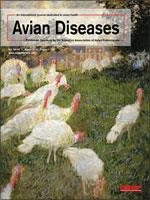This study was undertaken to observe the prevalence, serogroup, avian pathogenic Escherichia coli (APEC)-associated virulence gene, randomly amplified polymorphic DNA (RAPD) pattern, and antibiotic resistance genes of E. coli in backyard layers and their environment in India. From the 360 samples of healthy layers and their environment, 272 (75.5%) E. coli were isolated. The majority (28.67%) of them were untypeable. Among the studied virulence genes (papC, tsh, iucC, astA), 52 (14.32%) isolates were found to possess astA, including the isolates from the drinking water of the birds (4/272, 1.47%). These strains belonged to 18 different serogroups. Most of the isolates were typeable by RAPD and they produced different patterns. Phenotypic resistance of the isolates was most frequently observed to erythromycin (95.83%), chloramphenicol (87.52%), and cotrimoxazole (78.26%). None of the isolates was found to possess extended-spectrum beta-lactamases (blaTEM, blaSHV, blaCTX-M) or quinolone resistance (qnrA) genes by PCR. The present study was the first attempt in India to assess APEC distribution in backyard poultry production.
Repertorio de virulencia, caracterización y análisis de los patrones de resistencia a los antibióticos de Escherichia coli aisladas de gallinas de postura de traspatio y de su medio ambiente en la India.
Este estudio se realizó para determinar la prevalencia, el serogrupo, los genes asociados a virulencia de Escherichia coli patógena para las aves (APEC), los patrones de ADN polimórfico amplificado aleatoriamente (RAPD), y los genes de resistencia a los antibióticos de E. coli en gallinas de traspatio y su ambiente en la India. De las 360 muestras de gallinas sanas y de su ambiente, se aislaron 272 cepas de E. coli (75.5%). La mayoría (28.67%) de ellas no fueron tipificables. Entre los genes de virulencia estudiados (papC, tsh, iucC, astA), se encontró que 52 aislamientos (14.32%) poseían el gene astA, incluyendo los aislamientos de agua de bebida de las aves (4/272, 1.47%). Estas cepas pertenecían a 18 serogrupos diferentes. La mayoría de los aislamientos fueron tipificables mediante RAPD y produjeron diferentes patrones. La resistencia fenotípica de los aislamientos se observó con mayor frecuencia contra eritromicina (95.83%), cloranfenicol (87.52%), y contra cotrimoxazol (78.26%). Se encontró mediante PCR que ninguno de los aislamientos poseía genes de un espectro extendido de beta-lactamasas (blaTEM, blaSHV, blaCTX-M), o resistencia contra quinolonas (qnrA). El presente estudio es el primer intento en la India para evaluar la distribución de E. coli patógena para la producción de aves de traspatio.





